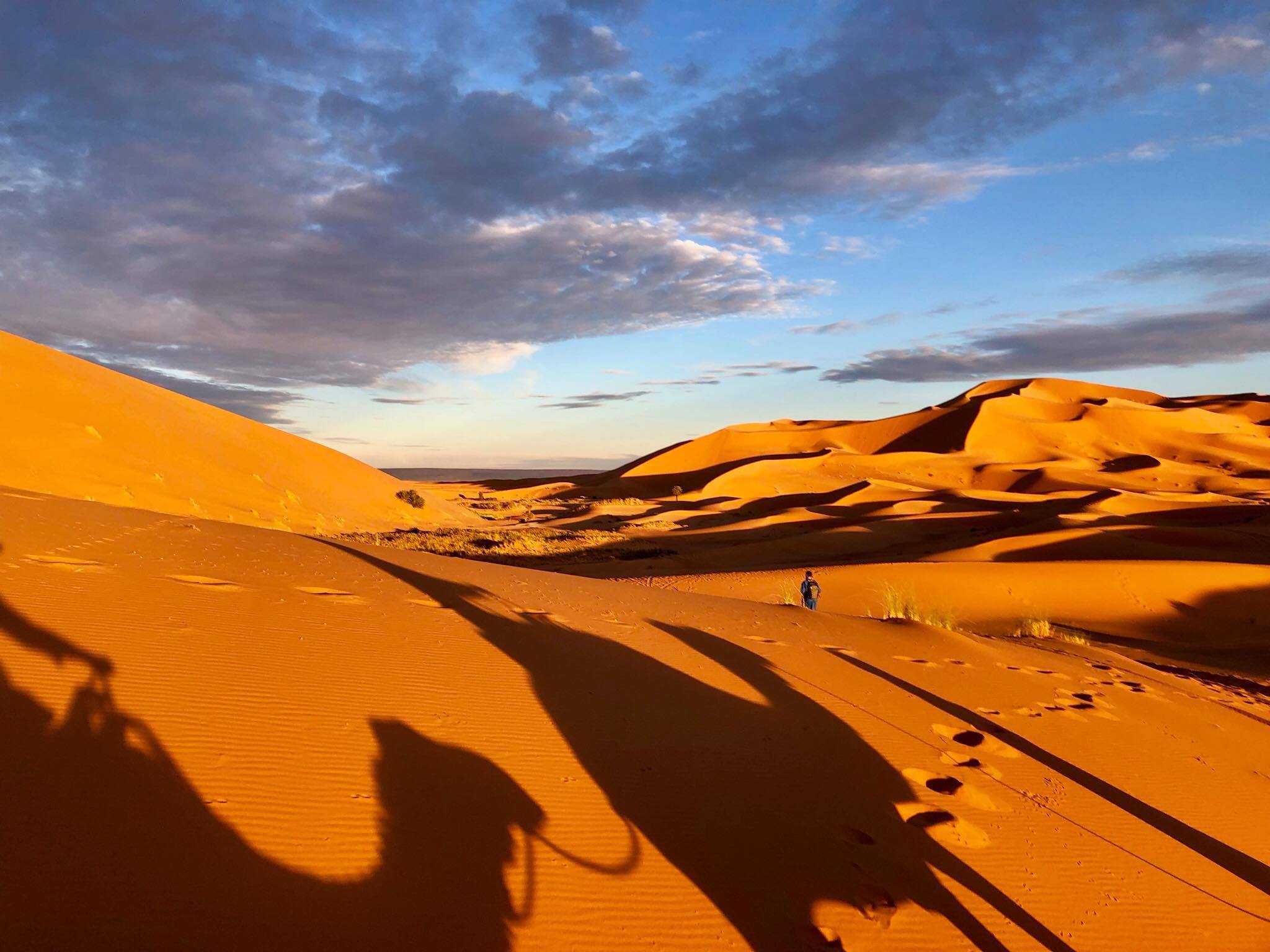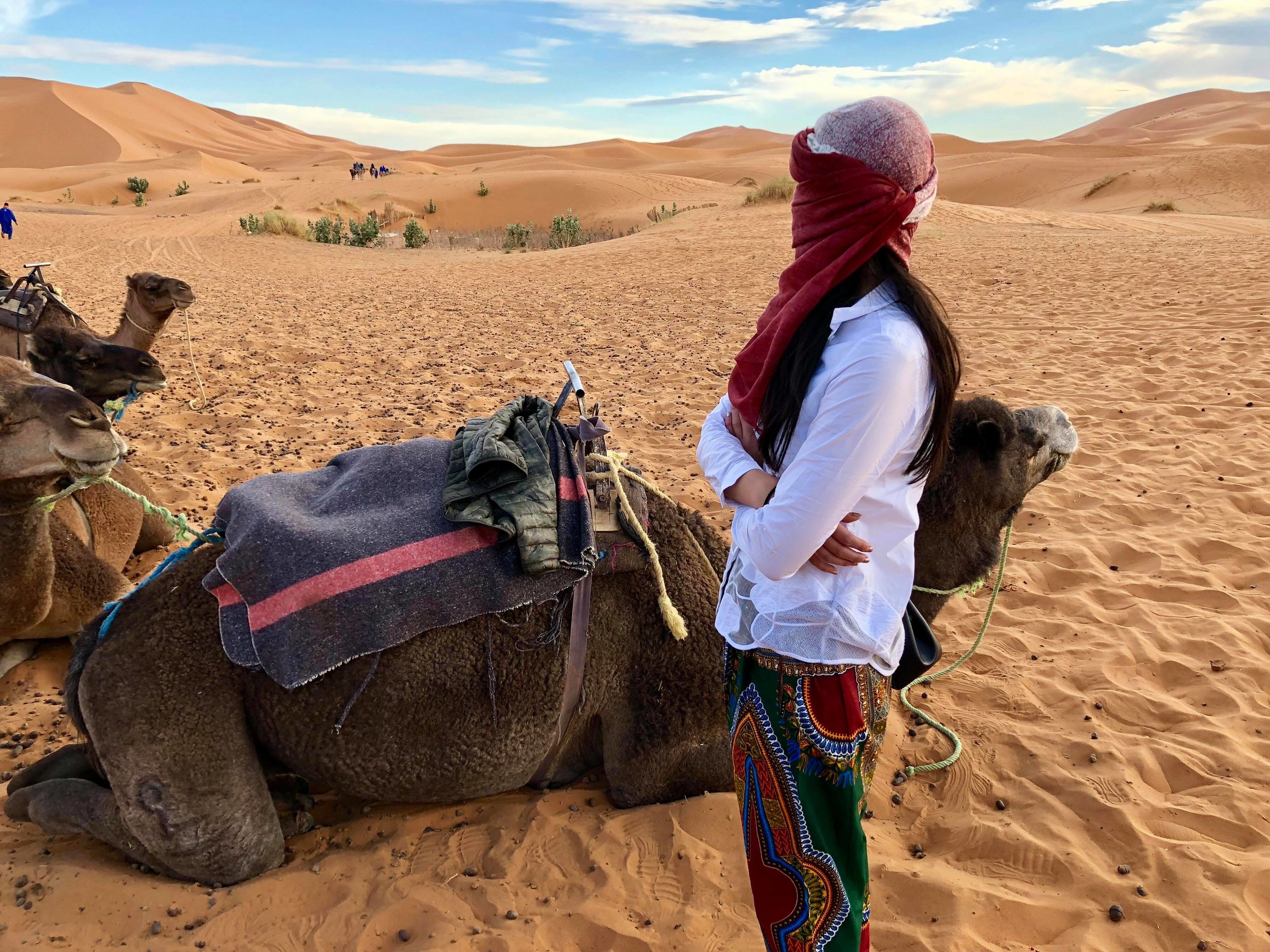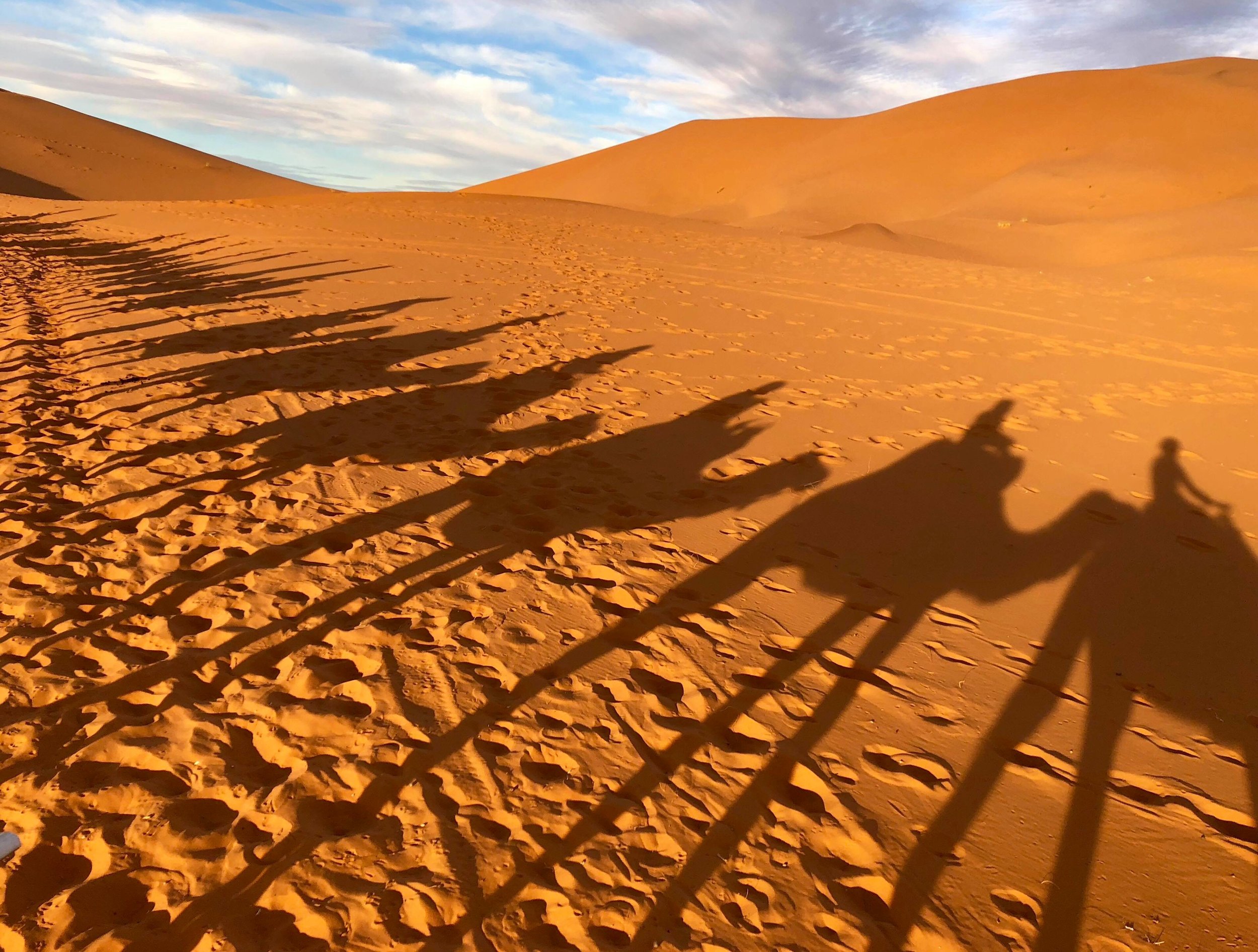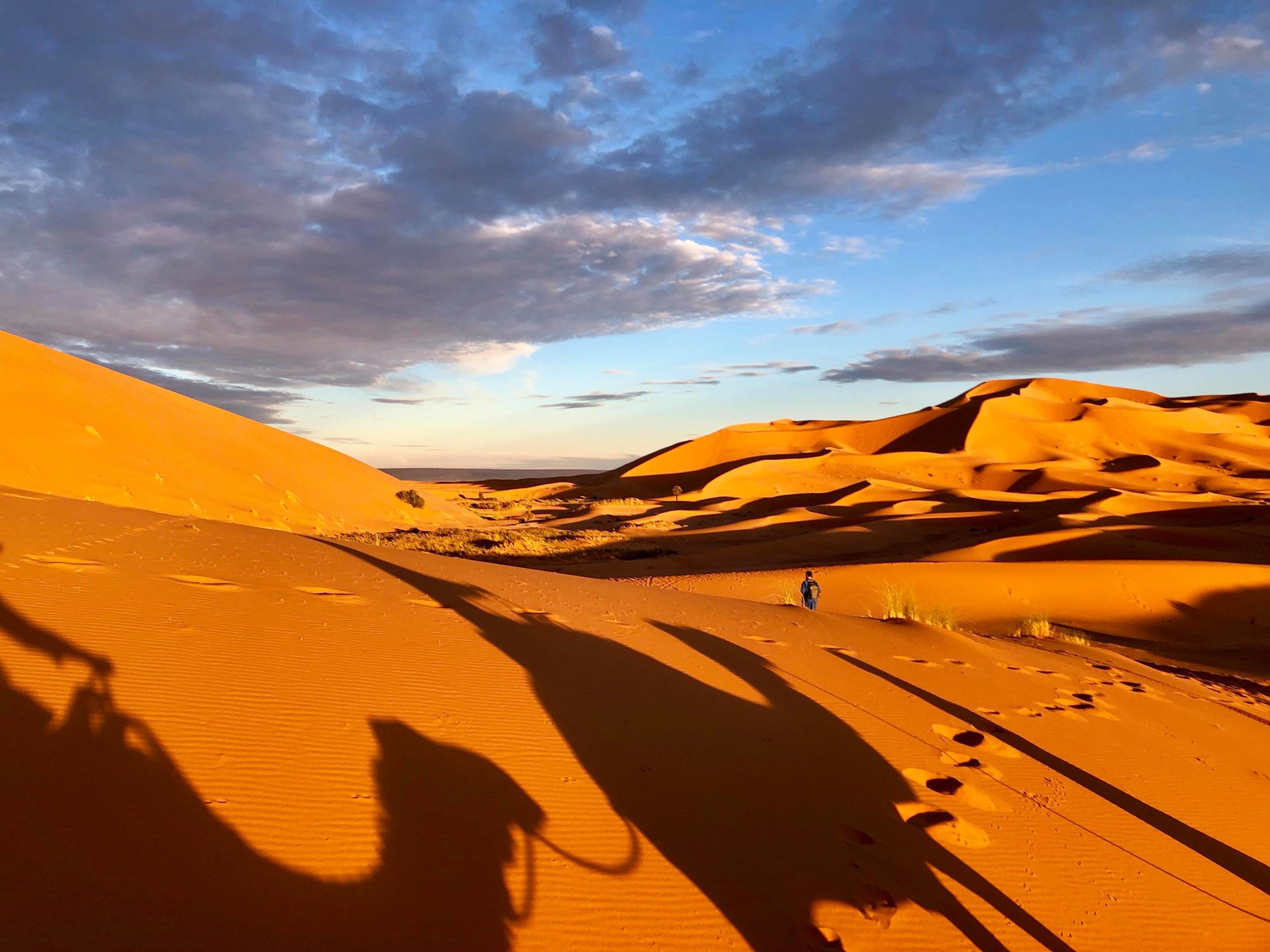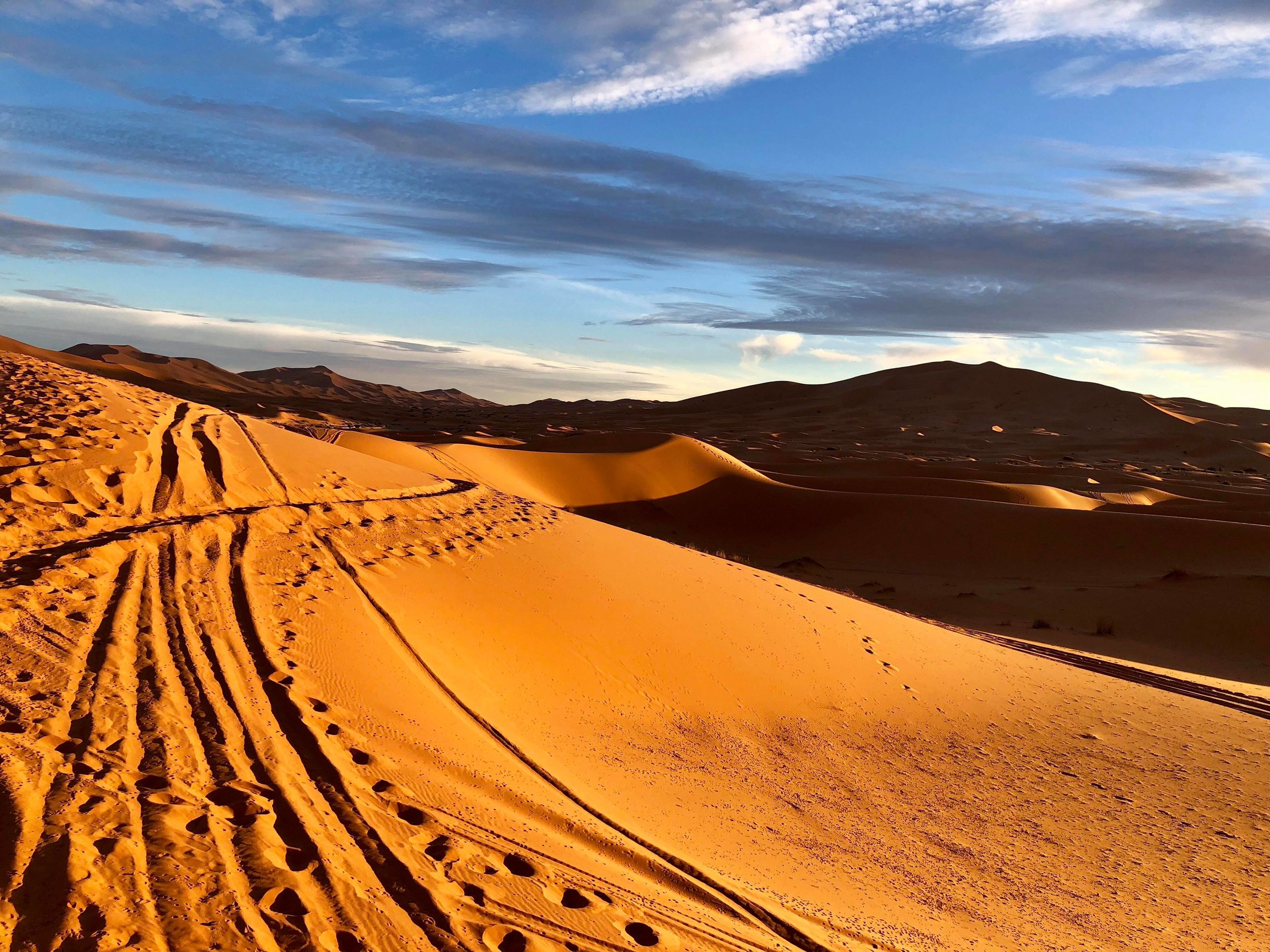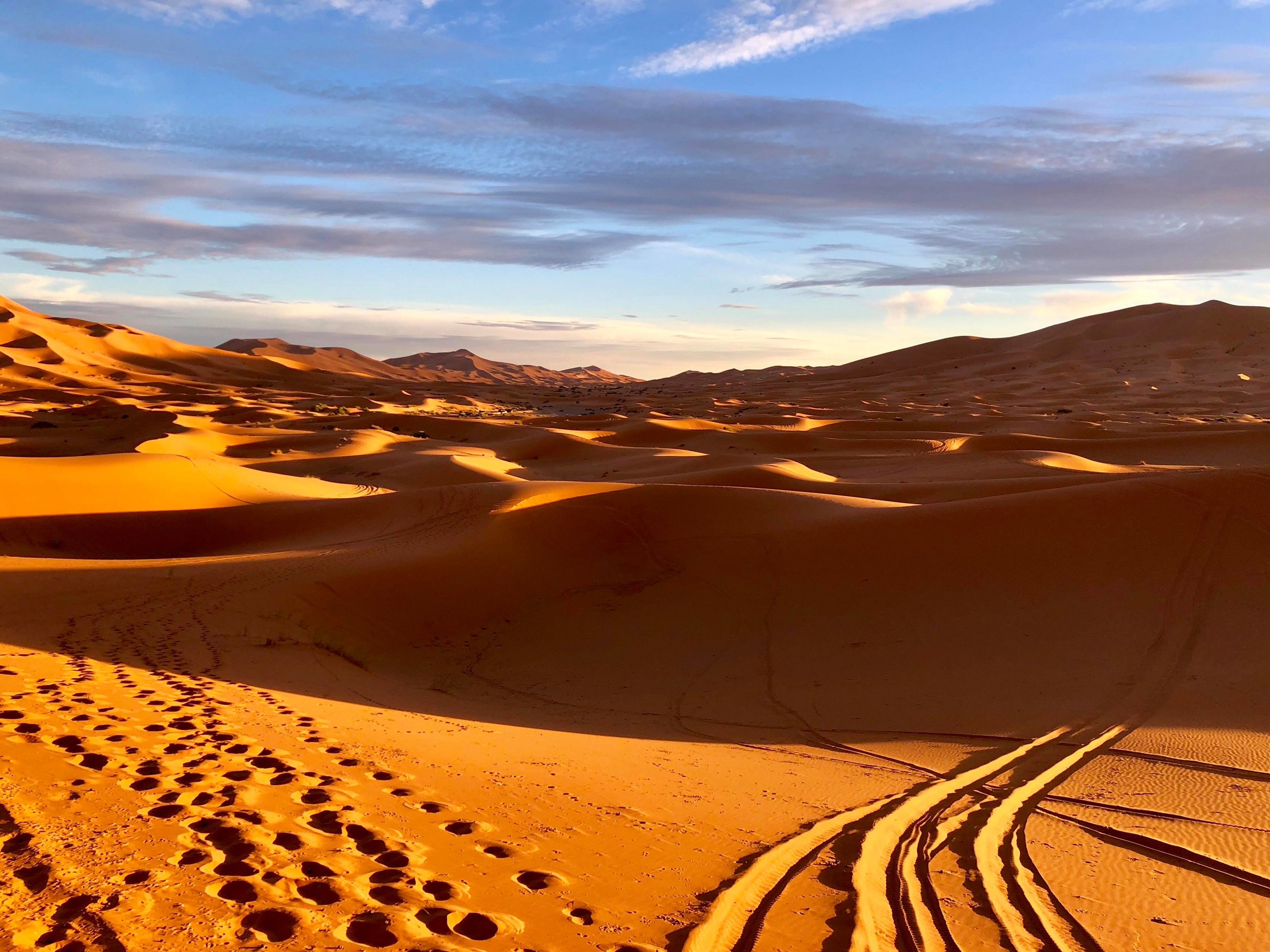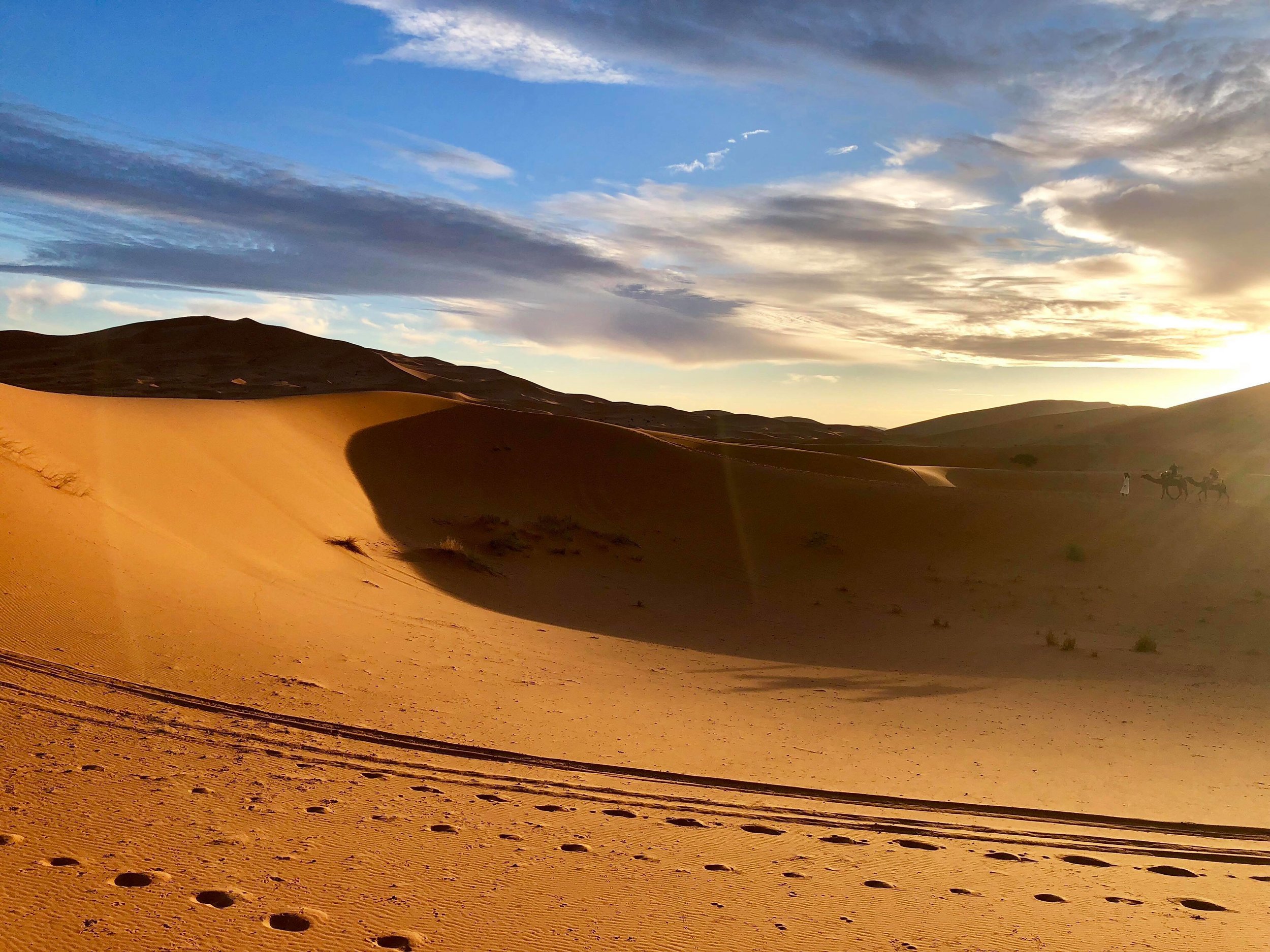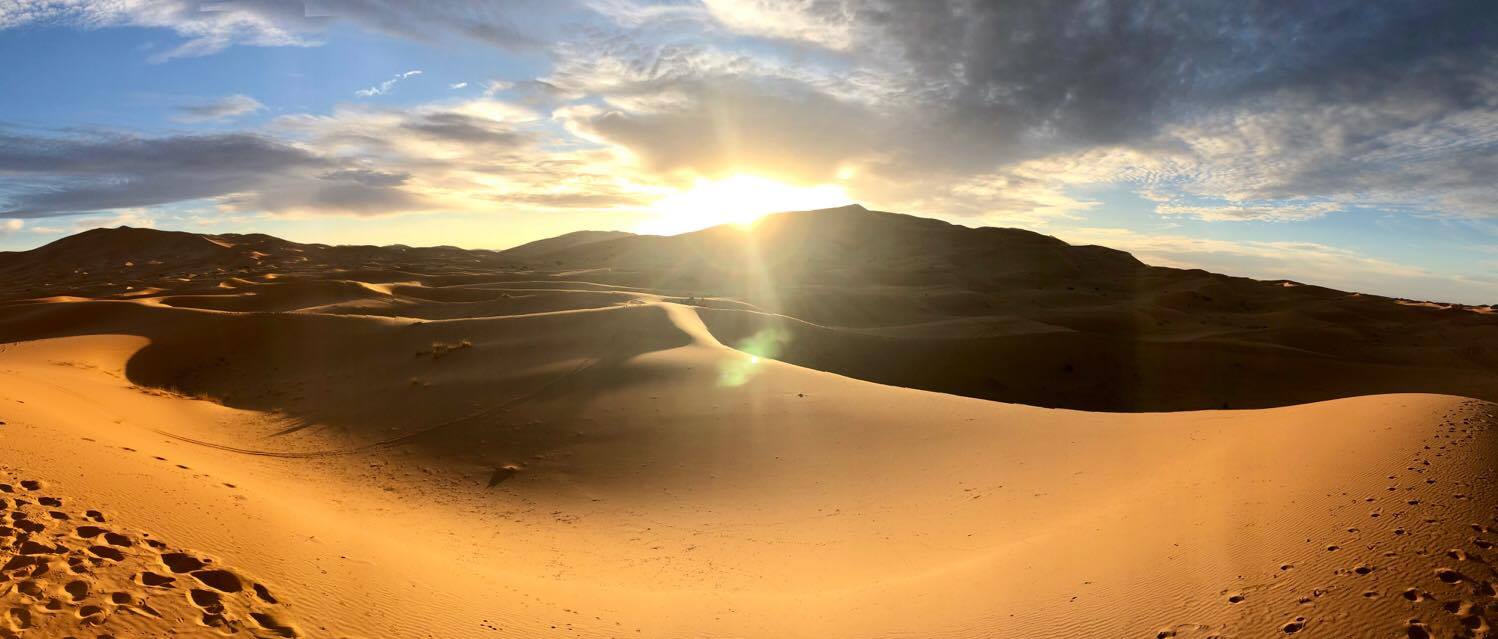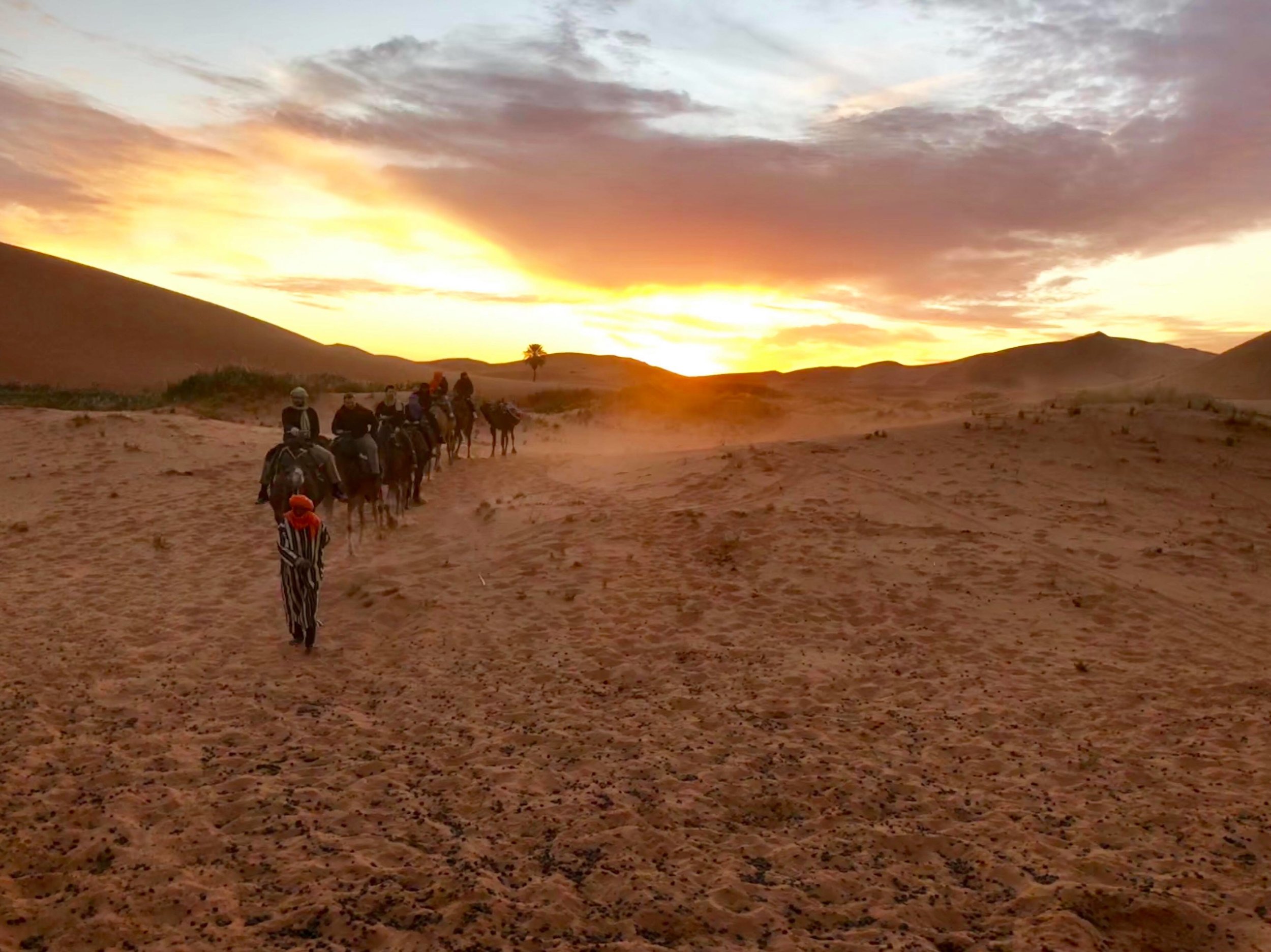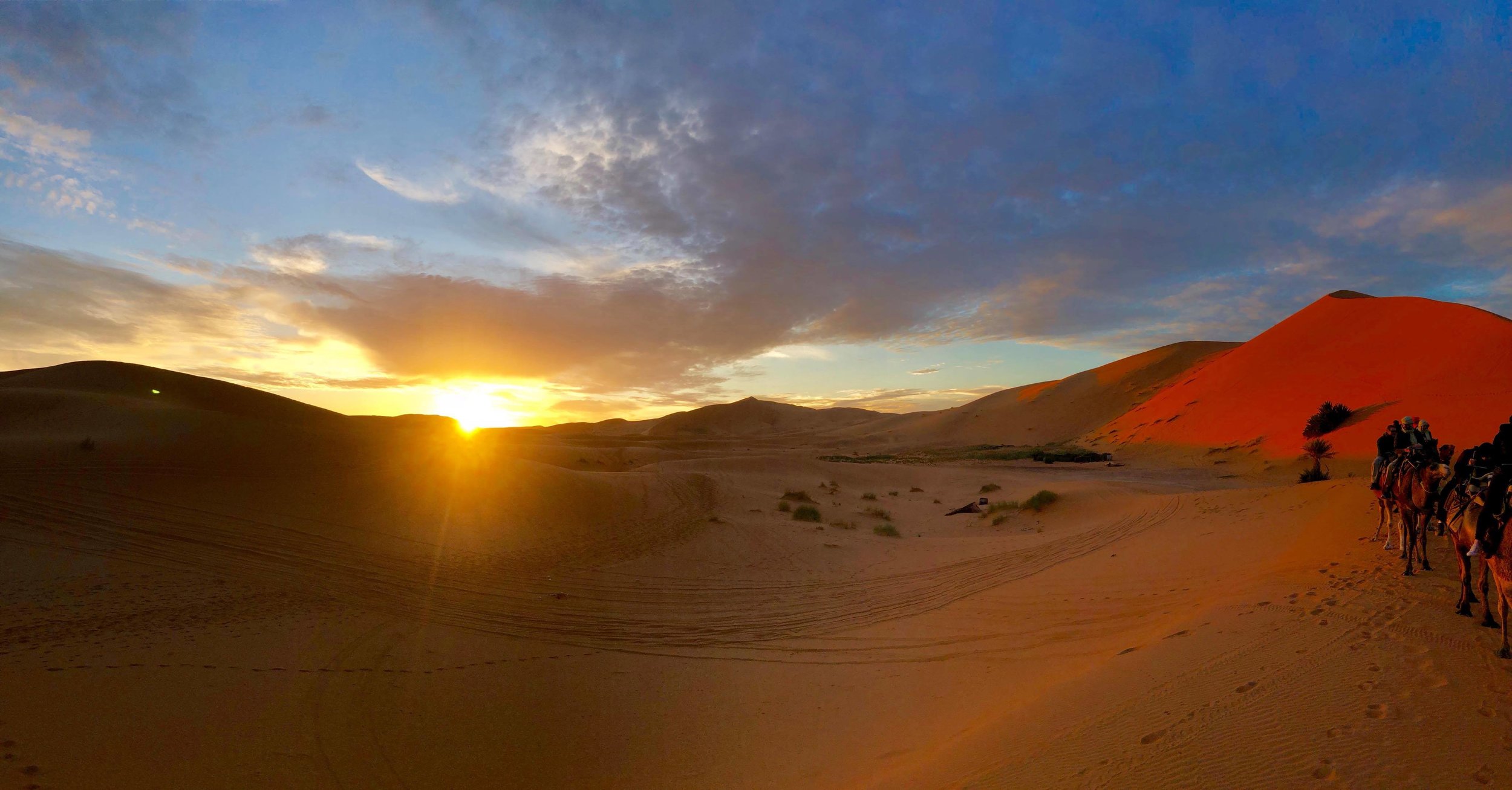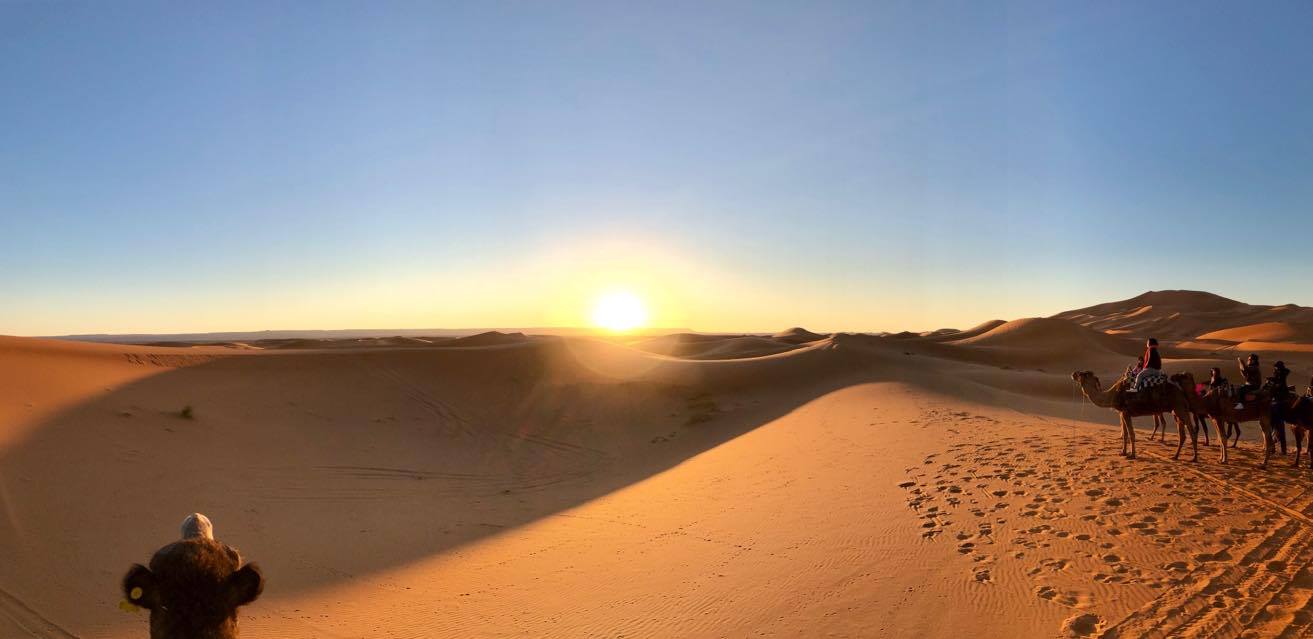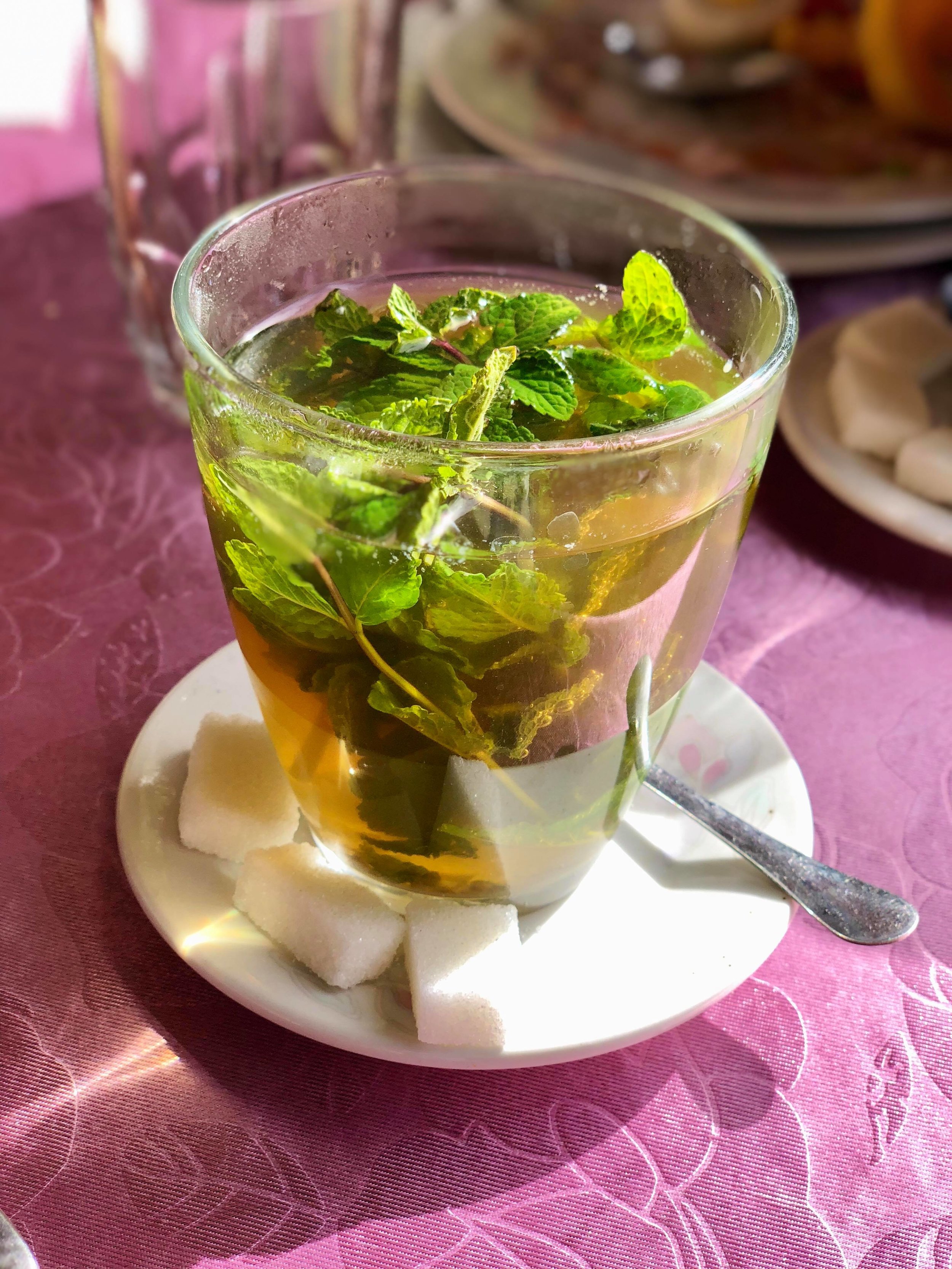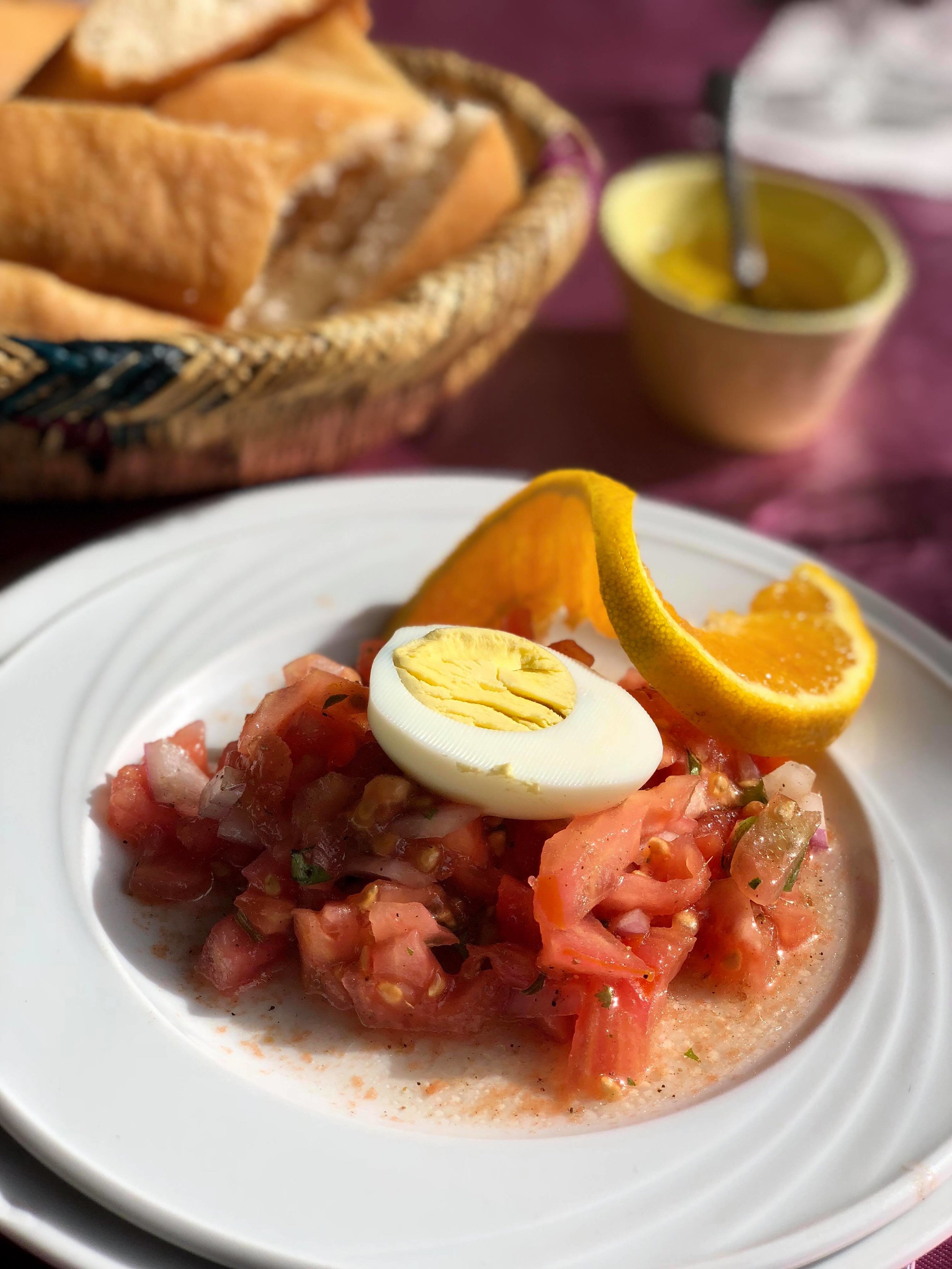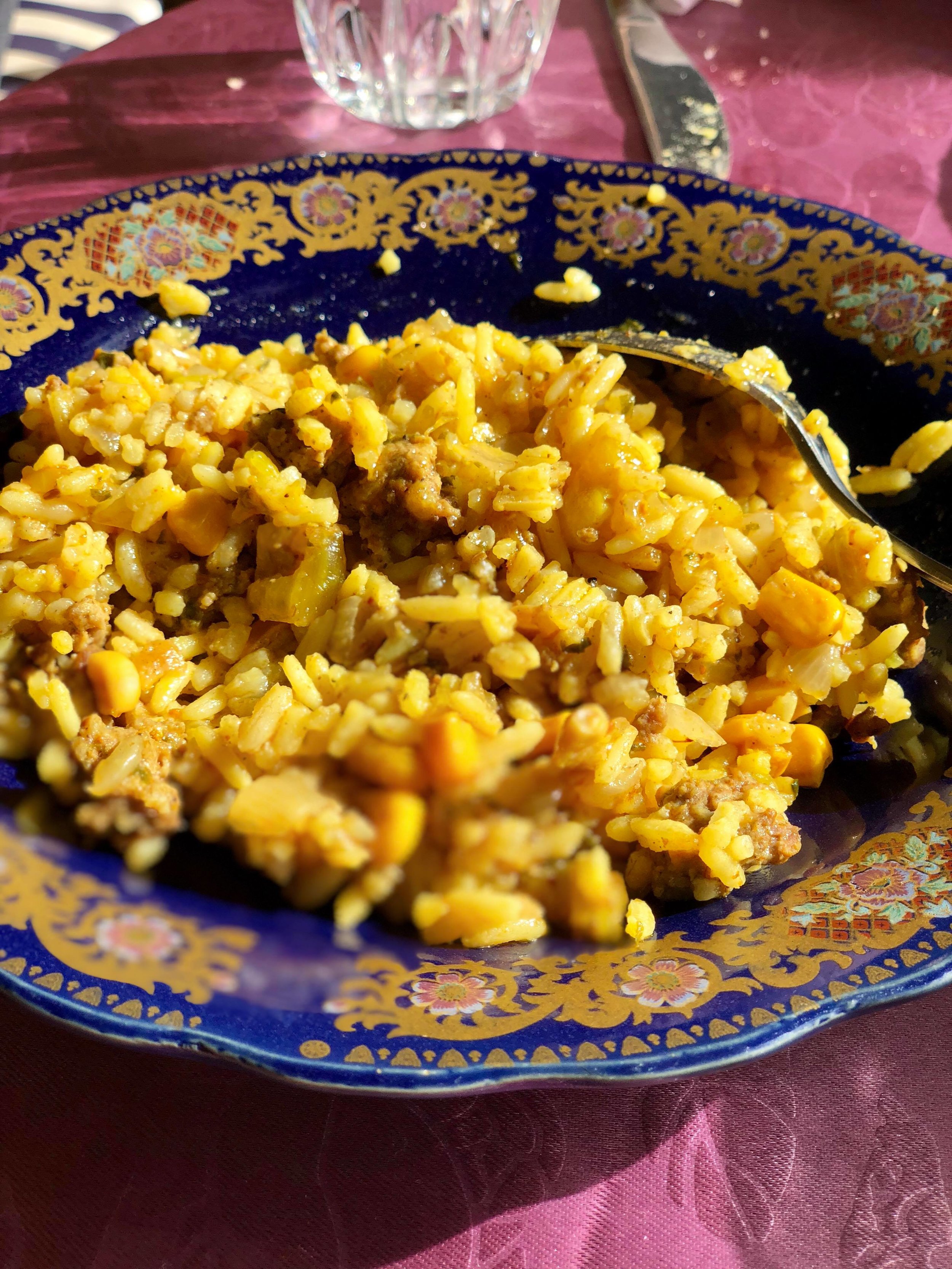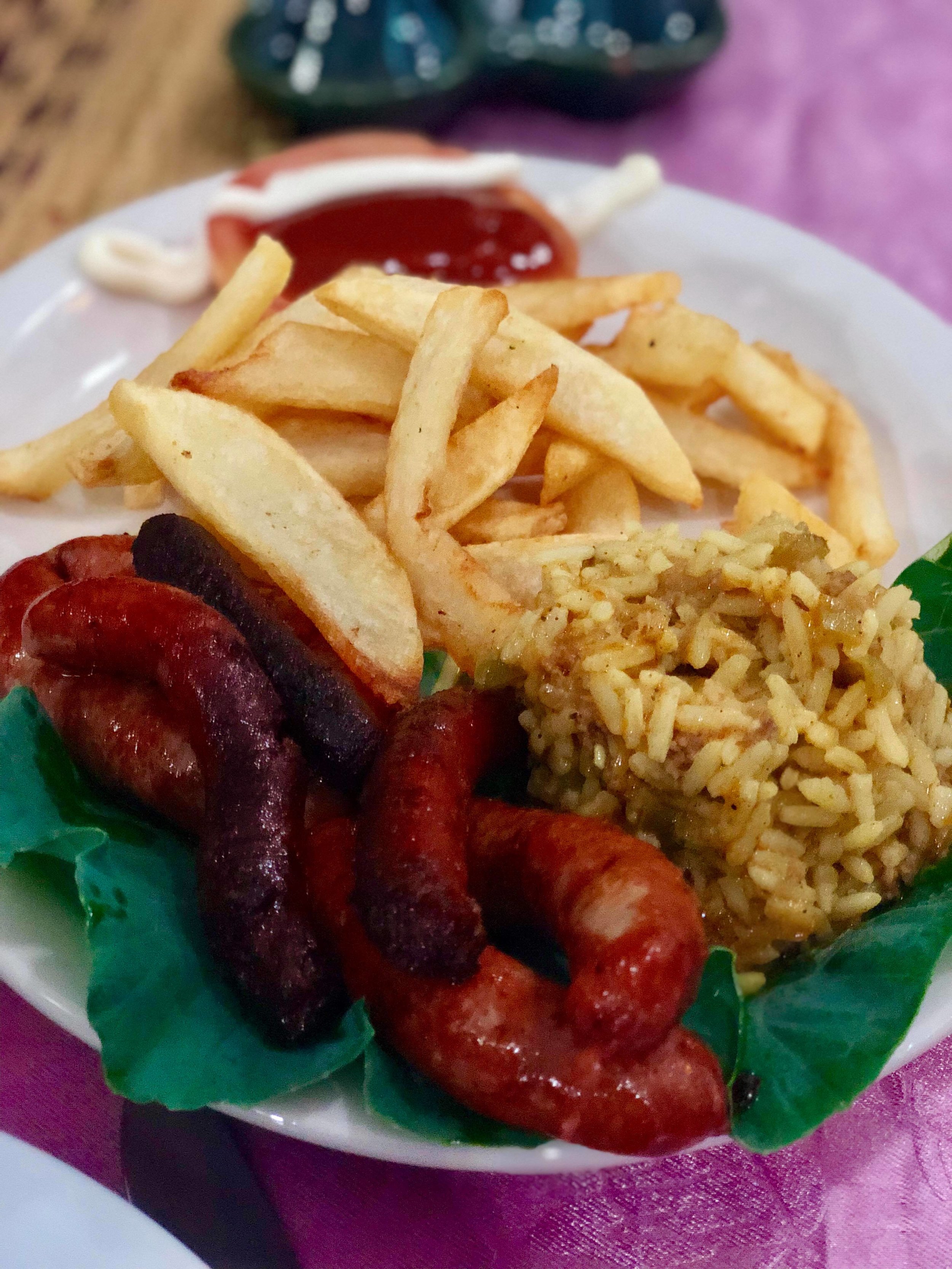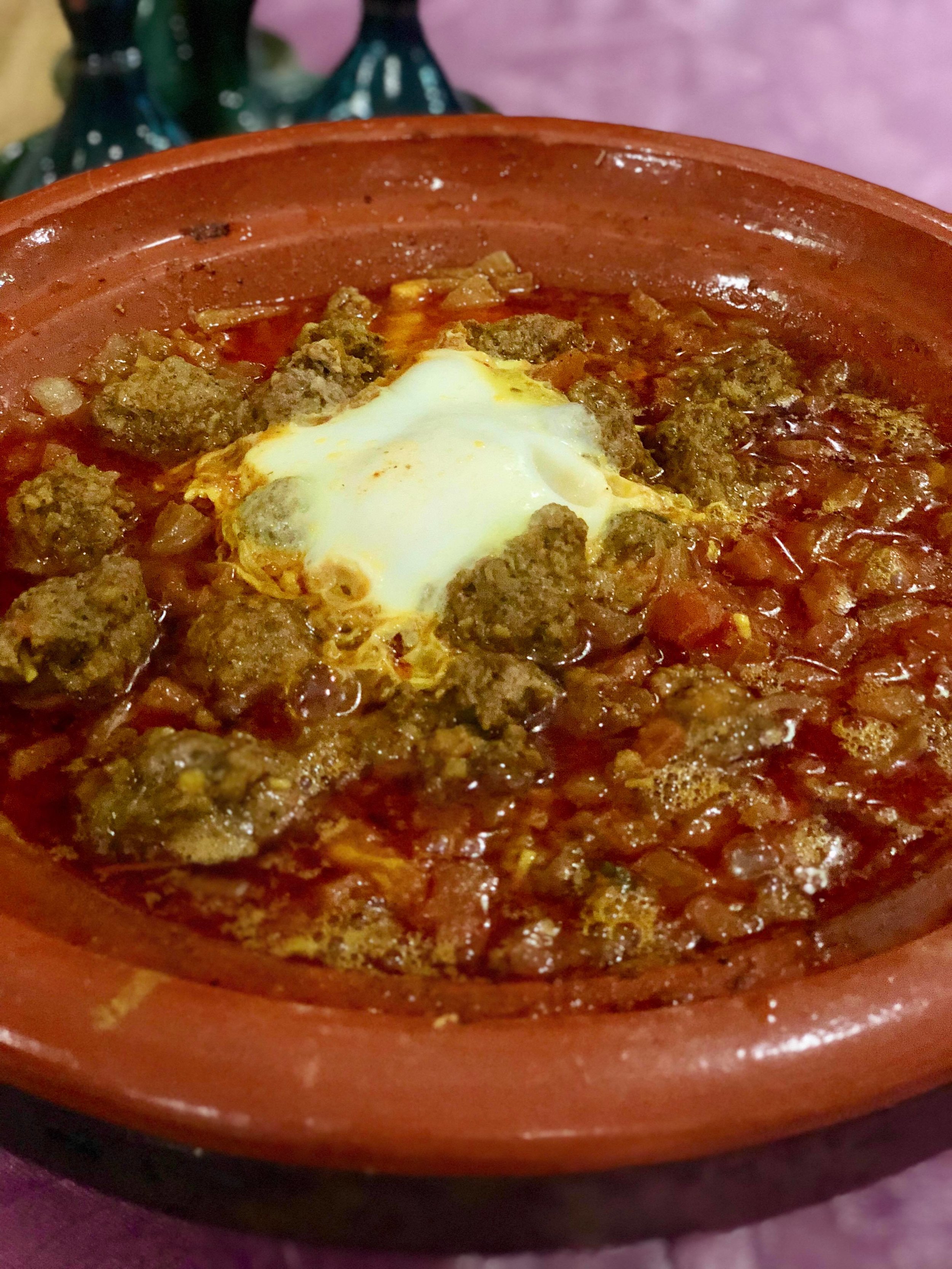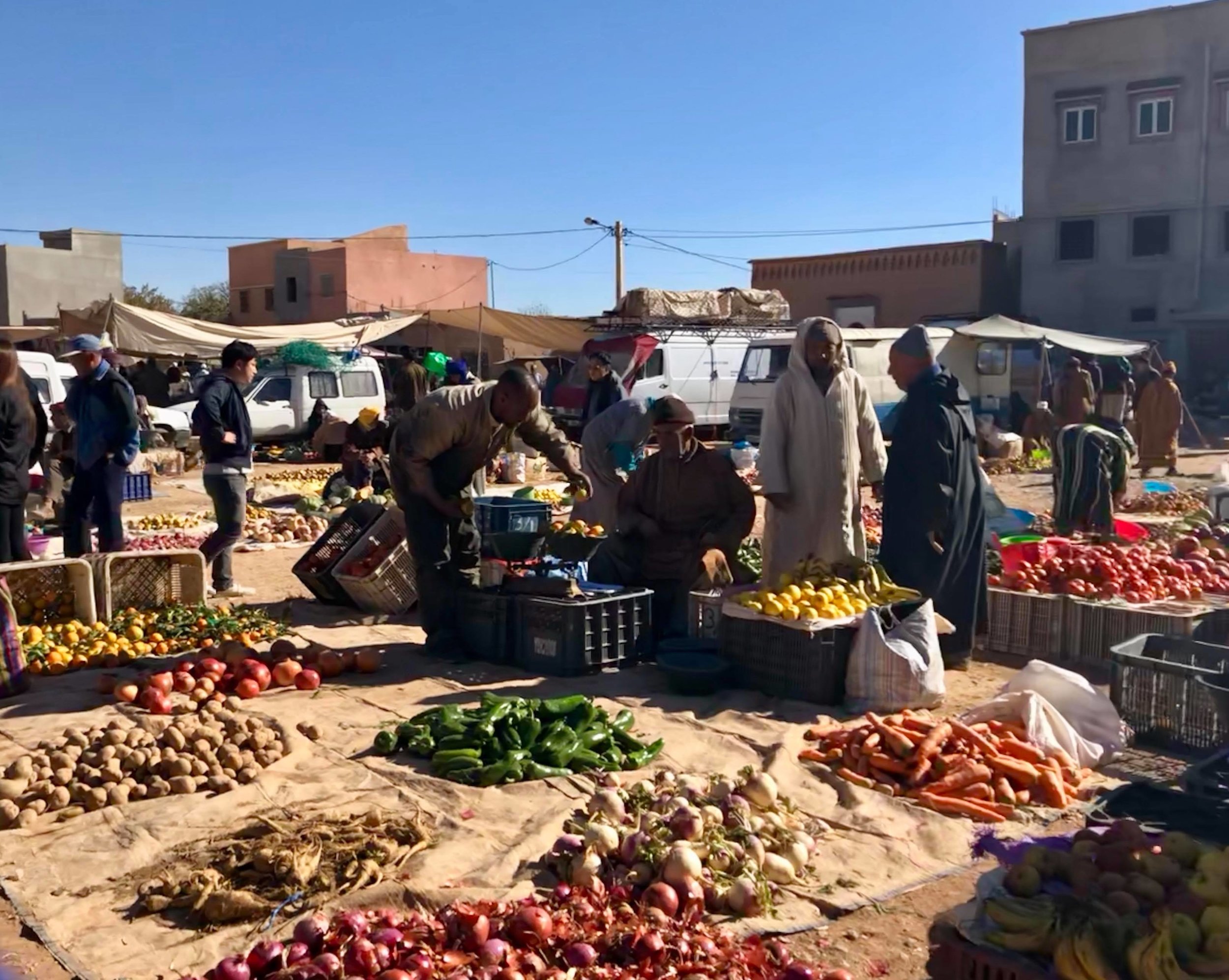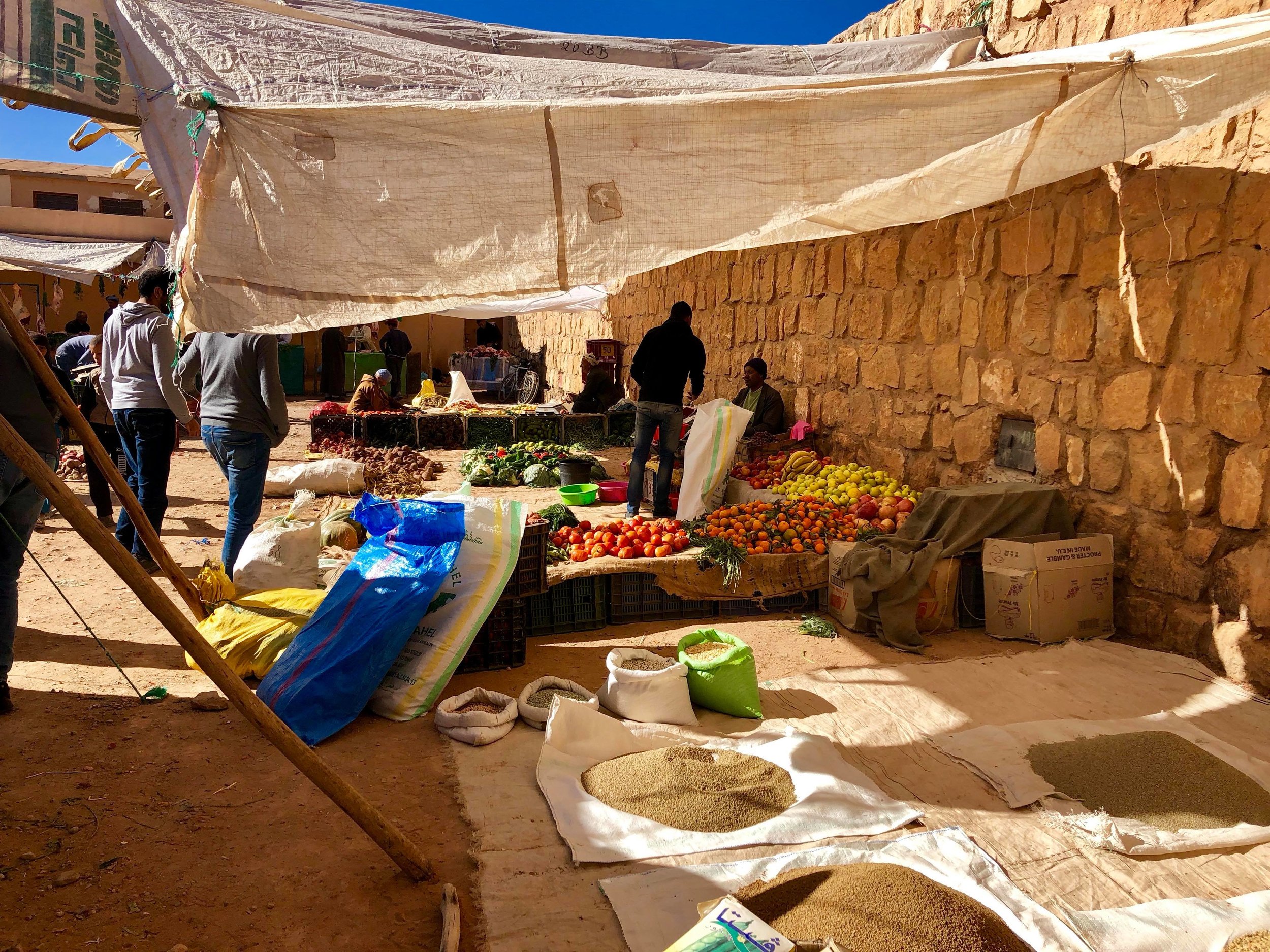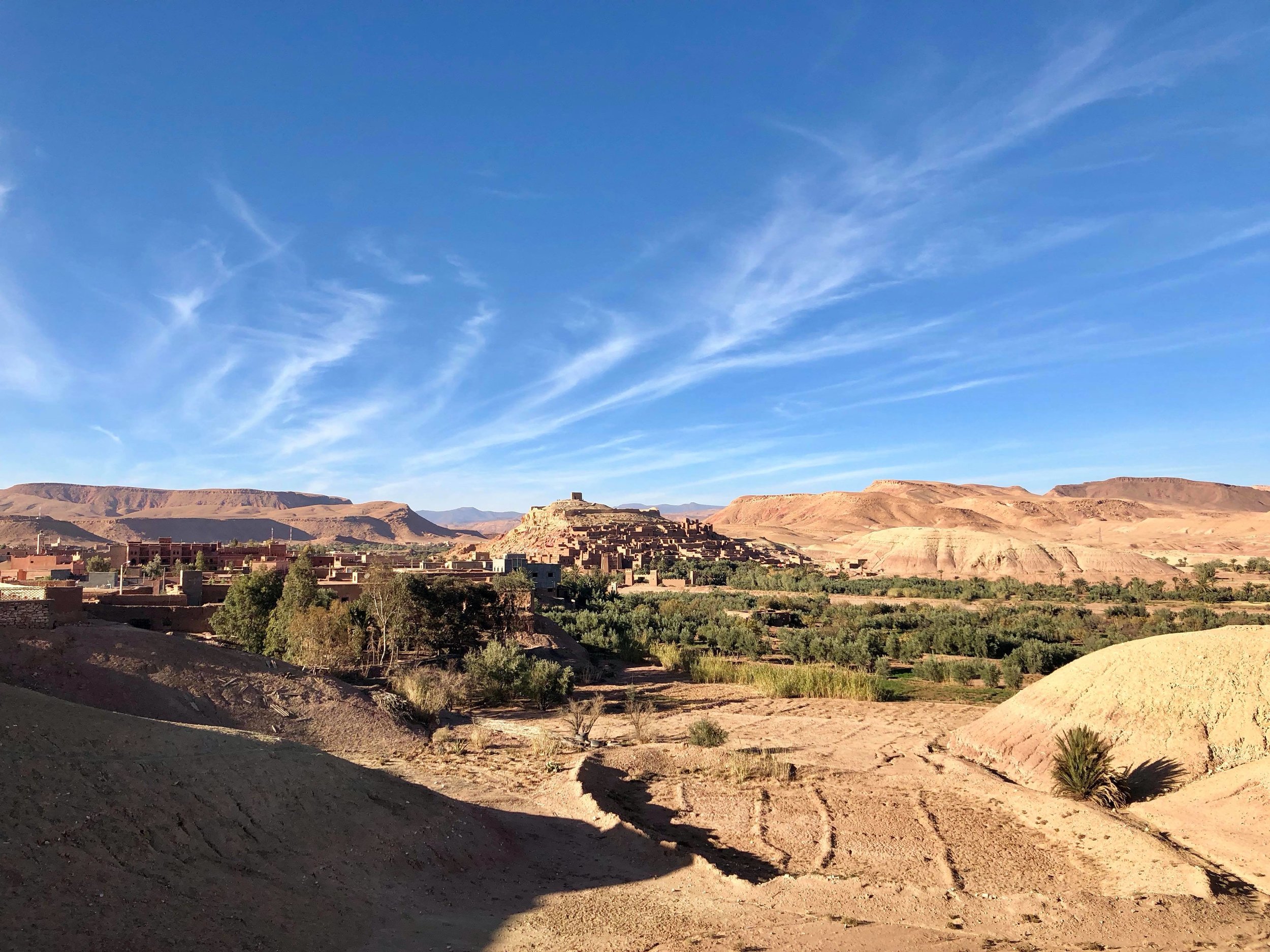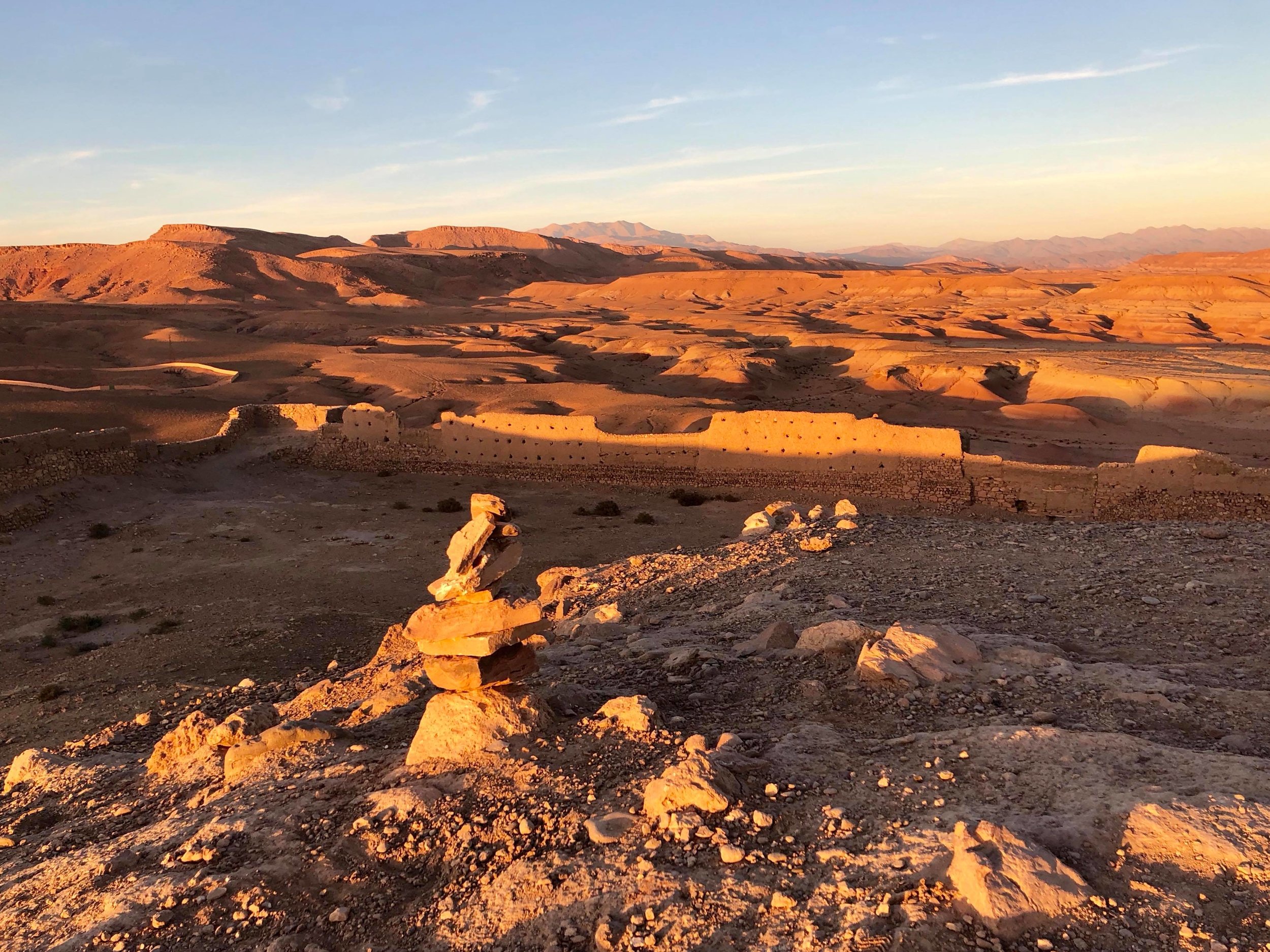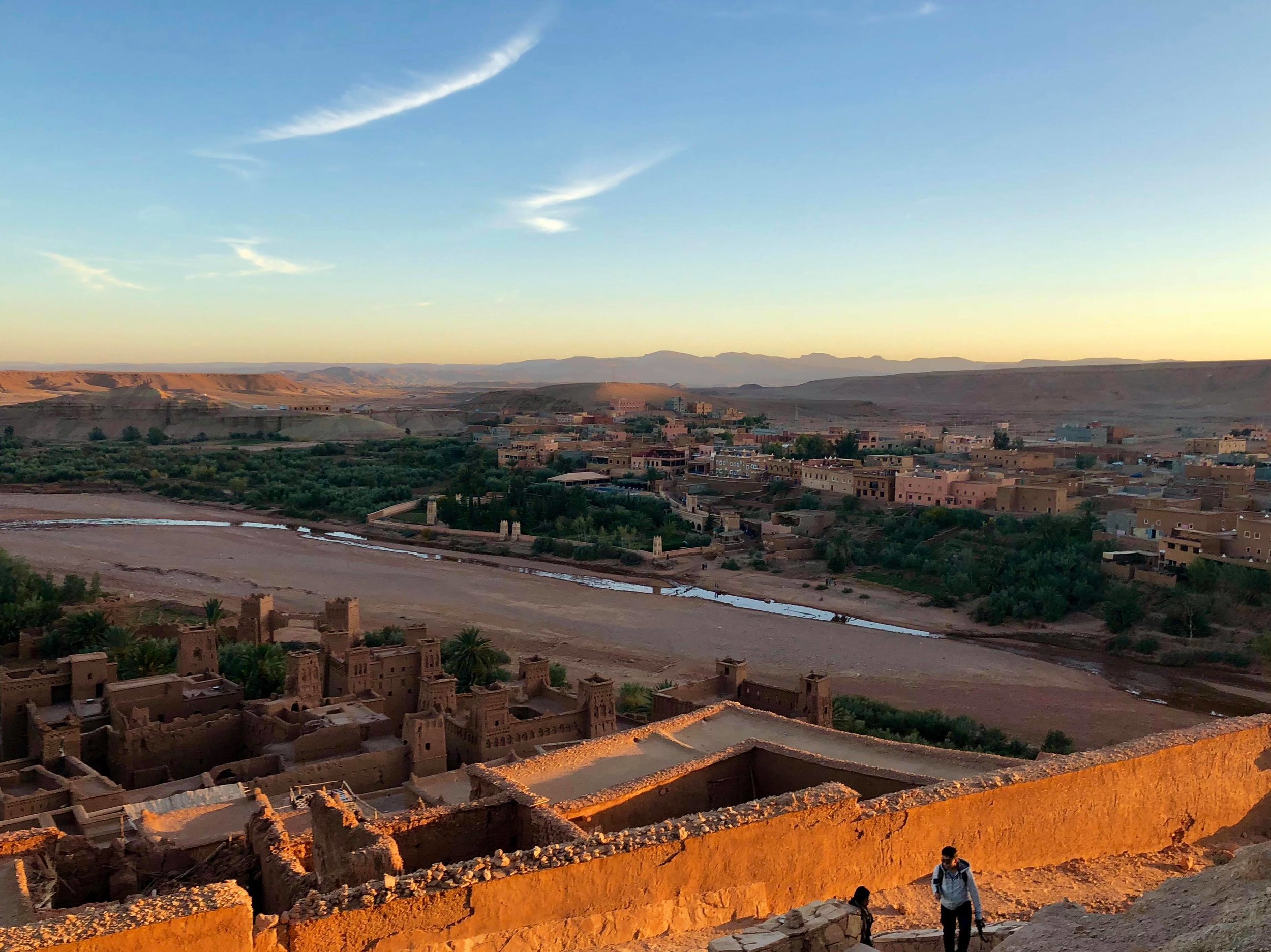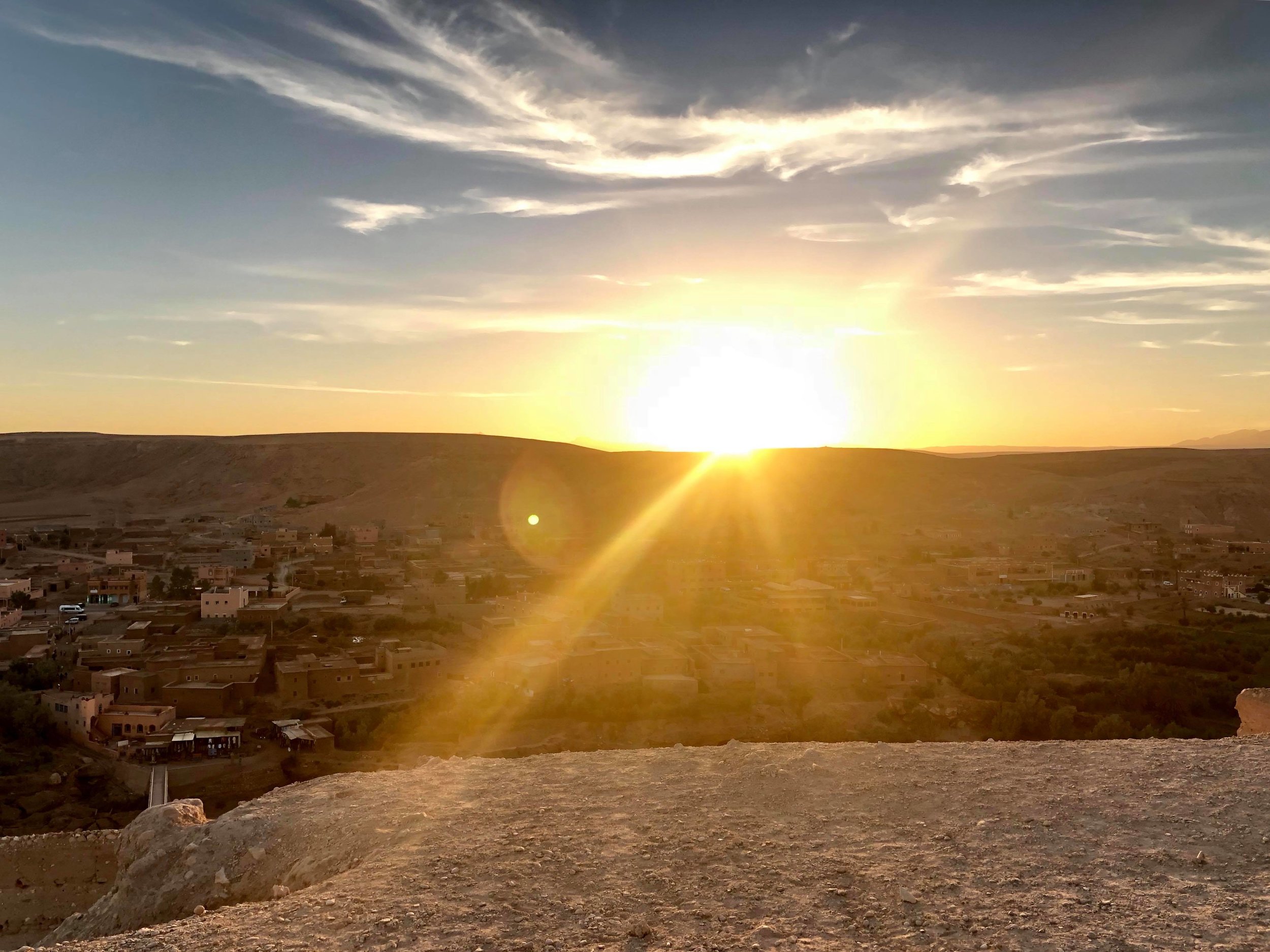The fourth day of my trip to Morocco began with a drive to the Sahara. Spanning some 3.6 million miles (9.2 million kilometers), the Sahara desert is the largest in the world. Though it does not cover much of Morocco like it does the countries of Tunisia, Egypt, Chad, and many more African nations, we had the opportunity on this trip to ride camels into the desert, and camp overnight.
The drive was filled scenic views and gradually changing landscapes:
Date palms in an oasis in the valley, planted hundreds of years before, now flourishing.
Dried and succulently sweet, these dates are chewy and delicious.
After a 10 hour drive, we arrive at Merzouga, a town on the edge of the Sahara. Gathered at the edge of the desert, our camels await to take us into the dunes.
Local guides will show you how to wrap your scarf or shawl into a Touareg turban, used by the natives to protect their faces from the sand and wind of the endless desert.
Camels are much taller than horses, so hold on tight as they stand, kneel, and sit - its a bit of a wild ride.
And away we wander into the vast sands. The setting sun made for some gorgeous reflections of our camel riding.
My first time in the Sahara, its magnificence and vastness was astonishing. One can't help but realize the perils of being lost in such an endlessly arid environment.
Against the backdrop of a setting sun, our string of camels is led into the desert by our local Berber guide.
The temperature differential between day and night in the desert is huge, varying as much as 20 degrees Celsius.
The playful shadows dance across the sand as the setting sun weaved in and out of various dunes all around us.
The Berber people are a group of natives indigenous to North Africa, much like the Native Americans of the U.S. or First Nations of Canada.
We pause atop a dune to capture a few final images of sinking sun.
And continue our journey towards the desert camp in the light of dusk.
Though the moon looks small and faraway here, the stars seen from the Sahara are some of the largest I've ever observed. Comparable to a time in my youth, when I watched stars with my parents in Hawaii.
As our group settled down around the bonfire our guides have created for us for the night - notice how cold it is, everyone is wrapped in jackets, scarves, and hats. The night spent in the desert was a hazy, fun, magical, albeit cold one.
As with every day since I've arrived in Morocco, we are served the omnipresent tagine. Tonight, it is freshly prepared with beef, lentils, carrots, winter melon, and potatoes. A hearty meal to combat the ironically blistering winds of our sandy environment.
The next morning, we hopped back on our camels for the hour-long ride back to civilization. Though my experience at the 'basic' (ie. more 'authentic') Berber style camp was an interesting experience - next time, I'd opt for the 'glamping' option, which comes included with hot showers and air conditioning - seen below.
We were woken early to catch a sunrise in the Sahara. The dawning sun casts tangerine shadows on the sand dunes all around us, and we breath in the endless fresh air admist a windless desert.
The sun rises, and the sands glow orange no more. The Sahara has once more returned to its original, unforgiving form - miles upon miles of endless dunes stretched out into the horizon.
So long, desert, I'd stay longer but I'm afraid I'm running out of bottled water.
Thus we begin our drive to town of Tinghir - home to the famed Todgha Gorge. we were treated to a relaxing day in Todgha Gorge. Upon arrival, another Moroccan lunch awaited: mint tea, left, and chopped tomatoes, onion, and parsley with Moroccan bread (known in Arabic as 'Khobz,' right.
Left, a 'Berber omelette,' typically served in the tagine dish, and right, curry spiced rice, with bits of lamb and onion.
Opting for a relaxing rest of the day, we go for a walk in the nearby village.
A short distance away is the Todgha Gorge itself. More majestic than can be captured in photos, steep cliffs arise on either side of the paved road.
Guesthouses sit at the foot of the cliffs, now predominantly empty due to the damage and danger caused by the falling rocks from the gorge.
The gorge itself is reddish brown in color, and has a small but determined stream of water running through it, reminding us of its origin.
That night, we sit down for another traditional meal, meaning Moroccan soup (left), and chicken cous-cous (right).
Two highlights of the evening: sausages with fries, curried rice, ketchup and mayonnaise, an ever-present tagine featuring 'kefta,' or meatballs, with a poached egg in the middle. The flavors of the tomato, minced meat, and runny egg yolk made for a potently umami taste, making this heavy dinner a good option to combat the cold.
Day 6, and we continue into the Atlas Mountains into the region of Ouarzazate, known for its famed kasbahs and many movies shot on location.
On our way here, we stop by a village market that only happens once a week, a brief glance into an otherwise opaque life of the locals here.
I buy some fresh pomegranates from a vendor, who uses a handheld scale to weigh the goods, the sight of which sends me back decades into the past, to the markets of China when I lived there as a child.
This 'witch doctor' peddles his wares of ostrich eggs, various animal derived essences, and a live komodo dragon to skeptical yet enthralled children in the crowd. We all slowly trickle away after a few minutes' pause, as our guide informed us that the man will expect tip at the end of his...demonstration.
Left, a rice krispy like dessert found at the market, and right, the option to buy a gazillion chicks for 10 cents per round, fluffly ball of joy (I have an affinity for round, fat animals).
Stopping for the first non-Moroccan meal of the trip, we imbibe on a local 'kefta' cheeseburger made with Moroccan bread as the bun, and some extra crisp fries. Right, a ham and crème fraiche pizza, an equally delightful dalliance into Moroccan western fare. Not pictured: a seafood cheese pasta that was also had refreshingly local notes on an otherwise Italian staple.
Something fun I discovered in the supermarkets there - teeth gummies. No, really, they are gummy candy (quite good too), in the shape of gum and teeth, or were they supposed to be dentures?
As previously mentioned, the region of Ouarzazate has been home to many film sets. Below is one of the more famous studios, which has played host to the sets and crews of the Mummy, Game of Thrones, Indiana Jones, and more.
After another hours drive, we arrive at the famed Kasbah of Aït Benhaddou. Many films have been shot on location here, including a Game of Thrones episode where Daenerys Targaryen rallies her troops in the first season.
Though the background is overexposed, the foreground here captures local villagers carrying crops on their backs, an incredibly anachronistic shot.
Ait Benhaddou is a well preserved 'Kasbah,' or loosely translated as fortress or medina from Arabic, and is designated as a UNESCO world heritage site.
Built thousands of years ago as a fortified village on the trading route between the Sahara and Marrakech, today the village is only home to four families, while most local villagers live in the town to the side of the Kasbah.
From the landing of this ancient fortress, we watch yet another Moroccan sun slowly set into the horizon - ending yet another day in this magical kingdom.
We end our night with a tagine cooking class. With the vegetables chopped and the spices laid out, assembling our chicken tagines was not especially complicated. See my masterpiece, to the right.

